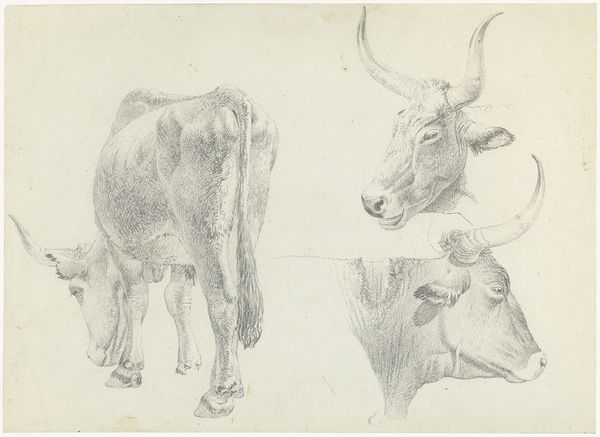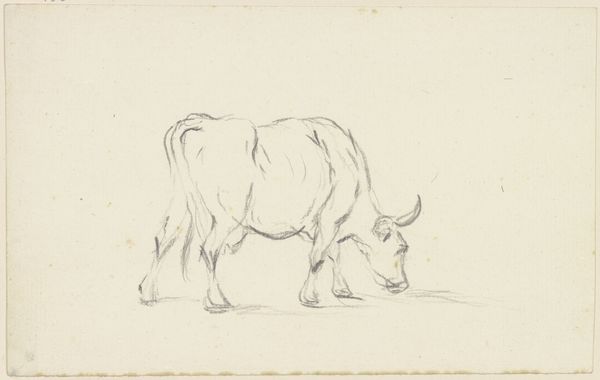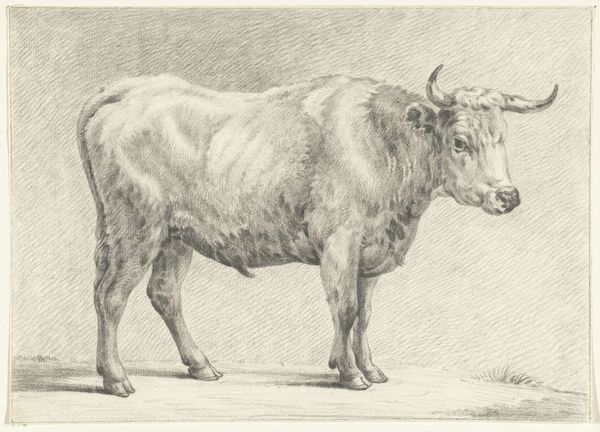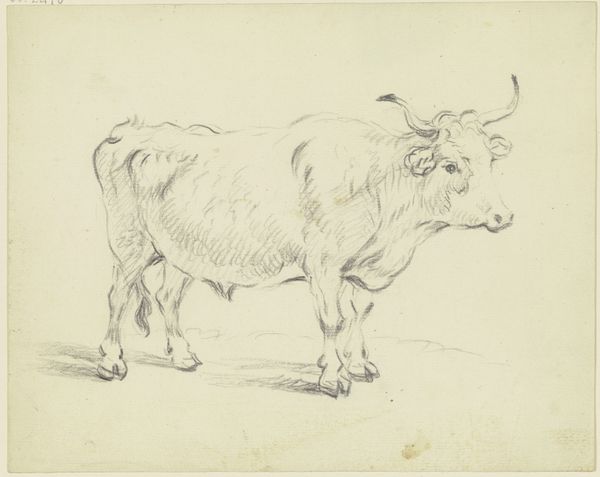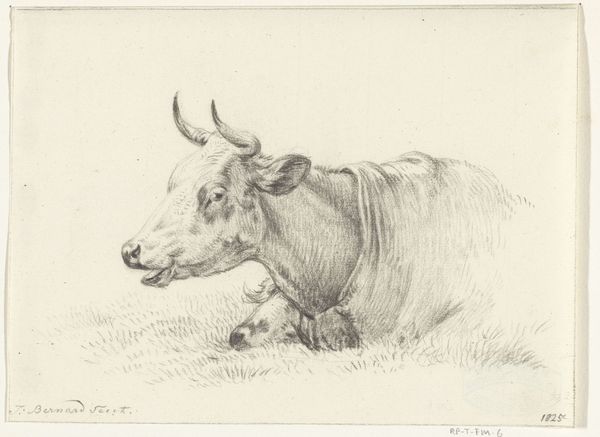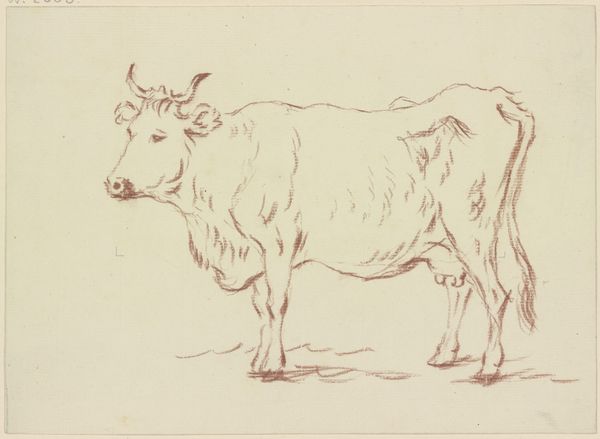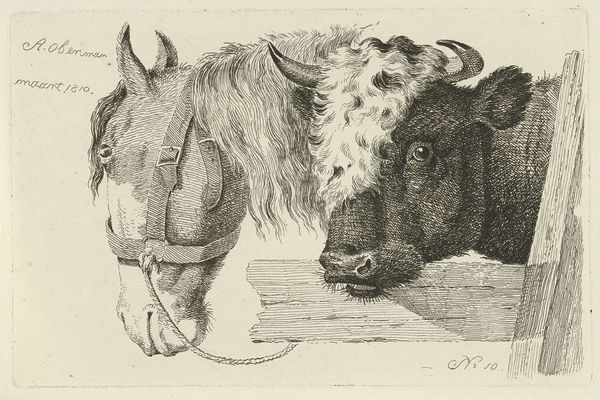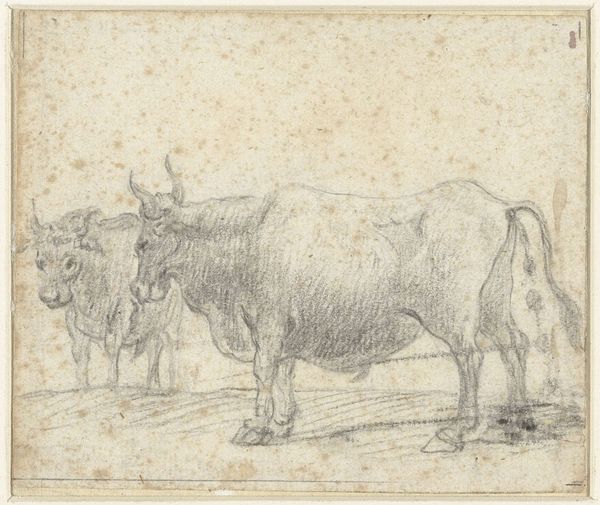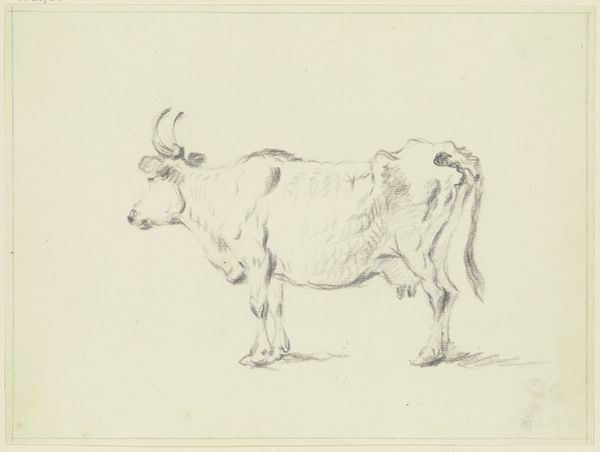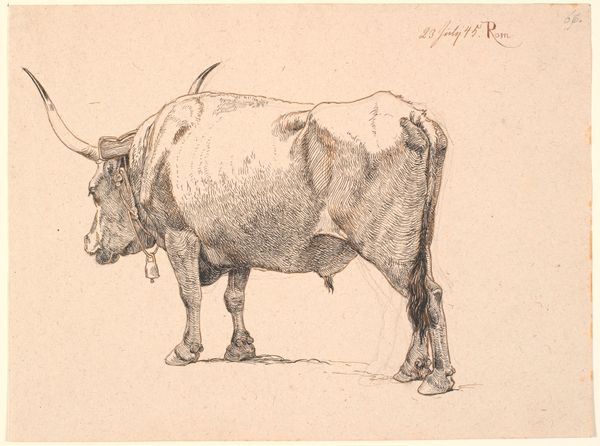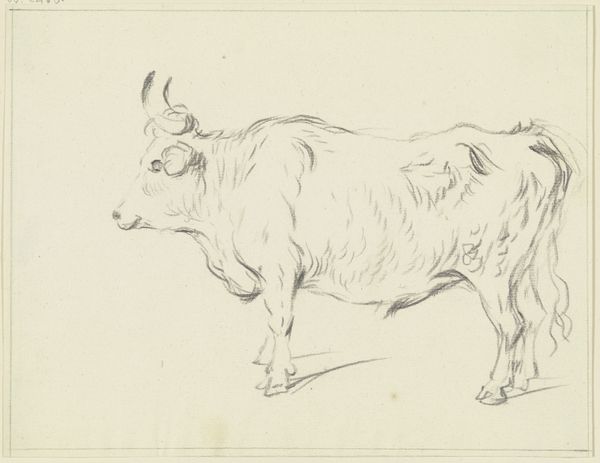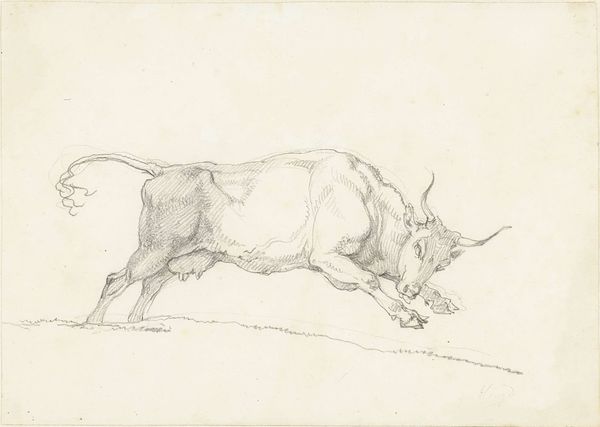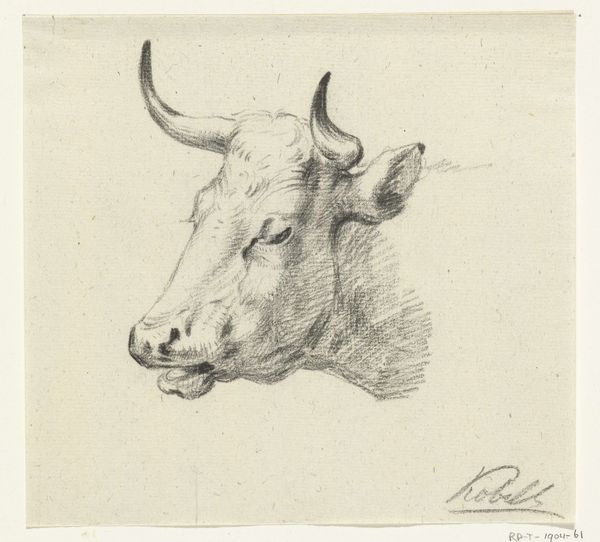
drawing, pencil
#
pencil drawn
#
drawing
#
animal
#
pencil sketch
#
landscape
#
form
#
pencil drawing
#
pencil
#
realism
Dimensions: height 222 mm, width 354 mm
Copyright: Rijks Museum: Open Domain
Curator: "Liggend en staand rund," or "Reclining and Standing Cattle," is a pencil drawing created sometime between 1787 and 1847, attributed to Josephus Augustus Knip. What do you think of its composition? Editor: Immediately, the sparseness strikes me. The minimal background isolates the figures, emphasizing a stillness. They appear docile, observed. I wonder what these creatures represent outside of pastoral scenery. Curator: Well, the economic reality of cattle in the 18th and 19th centuries is paramount here. Knip clearly put his emphasis on the animals as agricultural commodities: food, labor, even currency. Think about the craftsmanship involved in portraying the specific breeds, noting their build and musculature as assets. Editor: Exactly, it seems crucial to discuss this portrayal during a time defined by drastic socioeconomic shifts. These cattle, depicted with realism, embody rural life undergoing significant agricultural change through industrial growth and a surge in urbanization. They could also be read as symbolic of those displaced in that transformation. Curator: Yes, and let’s consider the artistry: Knip's deft handling of pencil shows an intimate understanding of form and texture. You can practically feel the weight and substance of these animals, built with graphite onto laid paper. Editor: I find their positioning almost confrontational, not traditionally majestic, or idealized. They occupy the space with quiet agency, despite their depiction within the capitalist structures. Curator: They occupy a space both literal and figurative, speaking to the raw materials they became. Consider too, the drawing’s accessibility – pencil on paper made this art form far easier to obtain, moving imagery to more of the population. Editor: True. Perhaps, seeing them placed centrally encourages our reflection of power dynamics as those that defined humanity's control over the natural world, or perhaps they mirror those systems we implemented on one another. Either way, its seeming pastoral presentation hides a far deeper story. Curator: It definitely leaves us considering many points about society's view of livestock through the centuries. Editor: Indeed. What appeared at first as a tranquil study leaves me reassessing ideas about human expansion, social progress and also how progress alters life forms and traditions forever.
Comments
No comments
Be the first to comment and join the conversation on the ultimate creative platform.
